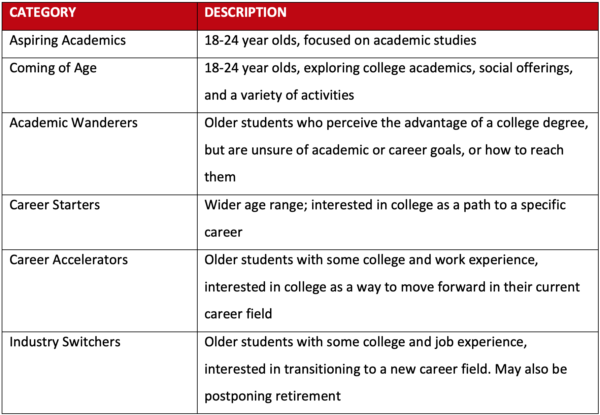Published on
Higher Education and the Blockchain Ecosystem: Using Blockchain in Admissions

Welcome to the third article of this ongoing series on the blockchain ecosystem in higher education. My assumption is that those reading this article are employees of a university or college, or are affiliated with higher education in some capacity. As a fellow academic, I am flattered this article piqued your interest, and that you made the wise decision to spend your valuable time engaged with my prosa oratio.Therefore, I will put my editorial skills into high gear to ensure you read the article to the very end, and learn something you didn’t know before.
I would like to preface the article by posing a question: What is the most important department in an academic institution? Many would say academics are the most important department—and without a doubt, it is certainly near the top of the list. The answer to this question, however, is not as clear-cut as one would think.
Higher education is on the ropes right now, facing escalating tuition, shrinking budgets, admissions scandals, financial aid fraud and pressure to innovate due to inefficiencies. Further, a significant change in accreditation regulations will soon be added to the list of challenges. These regulations will certainly impact academics and the entire university infrastructure, including the department I focus on in this article. We will take a look at what is around the corner, and why innovation may not be an option in the foreseeable future, therefore facilitating the push needed to take action.
So, back to my original question: What is the most important department in an academic institution?” Keep pondering, but hold on. The answer will soon be revealed.
Consider if you will, that a potential student was asked the same question. Do you think the response would be the same as yours? Different? Kick off your administrative or professorial shoes for a moment, and slide into a pair of Sperry’s (or Vans).
As a student, your first point of contact at the university or college of your dreams would have been the admissionsdepartment. Now, try to think back to yourpast experiences with admissions departments—as a student.
Were they positive to the point you would highly recommend the school? Or, was your experience so utterly horrific that you repressed the entire experience and can only recall it under deep hypnosis?
Although the admissions experience for many is uneventful, here is a true story that illustrates how painful the process can be. One young woman shared the misfortune her friend experienced after they both applied to the same university. The young woman was accepted, however her friend was not.
“She was waitlisted along with all other non-admitted applicants. To give you a little bit of background, she is a in-state student, she lived in this state forever and she applied only to this school/program which gives you significantly higher chance to get admitted. Also, her academic records were well above average so she called the Admissions office to find out why she did not get admitted.
The admission department messed up her GPA while transferring the data to a spreadsheet. Instead of writing 3.82 on her GPA column, the admissions representative wrote 3.28, and voila, her normal admission was vaporized at that moment when the staff member’s fingers desynchronized momentarily and pressed the 2 key one tempo faster than 8 key.
Finding out this ridiculous mistake didn’t make it any better. There was nothing the school could do to revert the mistake at that point … because the school [had] already sent all admission letters and thus … depleted all available quota.”
This is clearly an example of inefficiency and failure to innovate, within this particular admissions department. Although admissions departments are an important component to the university infrastructure, they are often misunderstood, underappreciated and overlooked. However, they are fully aware that their first few interactions with potential students are crucial. There is immense pressure to support each individual student’s different needs and goals. Further, they must know how to support them quickly to move them on to register for courses.
So, what is a university to do with this current state of affairs, when all other departments are vying for the number one spot in importance for funding?
Integrating blockchain into admissions processes can provide efficiencies, cost savings, secure identity verification, fraud prevention and help meet accreditation regulations. To get a clear understanding of blockchain’s potential, let’s briefly look at the problems inherent in the contemporary admissions system, and how Blockchain may serve as a viable solution.
What Do Admissions Departments Do?
Although some admissions departments only assist students at the beginning of their academic journey, many work with applicants until the end of their first course. Below is a list of some of the common duties. Please note that this list can vary depending on the size and structure of the institution, and may include more or fewer tasks.
- moves students from prospect to application
- evaluates applications
- evaluates transfer credits
- verifies student’s identity
- moves students from application to accepted to rejected status
- welcomes student to the university, provides tours and shares information on instructors and campus life
- motivates students to take the initial steps needed to begin classes (choosing a program or major, taking a placement test or deciding upon which classes to take)
- helps students set goals and deadlines
- provides initial advising on which classes need to be taken in order to achieve academic goals
- registers students into classes
- provides advice on issues like student housing or financial aid
- channels student email and voicemail inquiries to the appropriate contact person
- tracks Alien registration reports
- compares international student population to OFAC Sanctions list (explained below)
- maintains enrollment management data
- maintains student transcripts
- issues diplomas
- gathers leads from the university website
Within each of these areas there is potential for creating blockchain-based processes. You may ask why you would want to use blockchain when there are databases that already store and secure data? We will cover these items, current growing issues within admissions department, and an overarching perspective on how these issues are drastically changing the higher education landscape. One drastic change that Admissions departments are experiencing is within their student demographics.
Know Thy Customer
Most students today aren’t exclusively the traditional 17 year old who mom and dad just helped set up his new dorm room. For many years, students have been labeled by academe as either being a traditional (fresh out of high school) or non-traditional student (24 and older). These two umbrella labels no longer apply to many schools. Universities are beginning to recognize a growing number of subsets within this schema. To illustrate this point, the Lumina Foundation developed six categories that largely eliminate the commonly used, age-based distinctions for traditional and non-traditional students (Ladd, Reynolds, & Selingo, 2018). See Figure 1 below.
Successful academic institutions keep abreast of their ever-changing student demographics, have support systems in place to serve them.
Further, most students today are savvy shoppers who are no longer anxiously awaiting the mailman’s arrival for the acceptance or rejection letter from the university of their dreams. They have choices—lots of them. The stakes are incredibly high for admissions—especially if the product (the education) doesn’t offer some kind of fully loaded, all-options-included, try-before-you-buy, free-gift-with-purchase incentive tied to it. Not only must academic institutions provide a quality education at an affordable price, it’s essential to differentiate themselves from their competitors.
Lack of Innovation
The lack of innovation inherent in most institutions of higher education is highly frowned upon by prospective students. They want to know that their diploma represents the latest knowledge and skills needed in their field. If they knew that their journey was starting with the Admissions department manually inputting their information manually where there are increased possibilities for human error (such as inputting a 3.28 GPA rather than a 3.82 GPA), their doubts about the institution would rightfully increase dramatically. How would you feel if you went to the bank and a teller was using an abacus?
Financial Aid Fraud
Financial aid and identity fraud alone robbed students of $187 million in federal student aid from 2009-2012, according to the Department of Education. The issue continues to escalate despite major efforts by law enforcement and universities.
Financial aid fraud is defined as “the attempt to materially mislead a school, funding agency or guarantor to allow a student to pay tuition with money for which he or she would not otherwise qualify.” Financial fraud can be committed by students, parents, employees of the university and outside fraud rings. Although universities attempt to detect fraud at the admissions level, proving fraud takes up employee time and money. The Office of Inspector General has listed ways in which financial aid fraud is carried out:
- Falsifying a Social Security Number
- Students submit applications from the same IP Address
- Students call in from the same phone number or use the same fax number
- Students use the same email address, use disposable email addresses, or aliases
- Alien Registration Status
- Dependency Status
- Income and Assets
- Number of Family Members in College
- Falsification of GEDs/HS Diplomas
- Identity Theft
- Distance Fraud Schemes
- Ghost students
- Leasing of eligibility
- Default rate fraud
- 90/10 Rule manipulation
- Financial statement falsification
- Falsified last date of attendance
- Obstruction of a federal audit or program review
- Fraud/theft by school employee
- Falsification of enrollment
- Satisfactory Academic Progress
- Falsification of grades
- Failure to make refunds
- Loan theft/forgeries
This is how one type of identity fraud ring might work:
There is a “ringleader” who uses stolen personal information to create a “straw student.”
The ring applies for admissions and gets the “student” accepted for financial aid using falsified personal information. The issue here is that there are no red flags indicating that student is a fraudster during these initial processes because the information provided is valid. The fake student begins the course by only completing what is required—up until the financial aid funds are disbursed. Then, the student immediately drops the course and the fraud ring keeps the financial aid money. In essence it’s a contemporary take on mining identities from names on tombstones, hoping that you will never have to actually produce a body.
To flag these fraudsters right at the beginning of the admissions, universities need to invest in identity verification technologies. It just so happens that blockchain is one of these technologies. Although there are many identity verifications providers, after researching a few companies specializing in robust identity verification and higher ed fraud prevention, Token of Trust and Analytikus have become my personal favorites. Token of Trust can be used alongside websites or apps and the quality of information is high. Information comes from authenticated online accounts that are bound by the user to their Token of Trust profile. They cross-reference datafrom credit card bureaus, motor vehicle record histories, watch lists and other sources. Additionally, they only accept information that documents at least a couple years of activity. All of this information can then be recorded to blockchain and shared with other universities. Analytikus goes a step further, using sophisticated artificial intelligence applications to detect patterns associated with fraudulent applications and provide early warnings to admissions personnel. All information is then written to the blockchain to create an immutable record of the fraud should it be needed for legal purposes.
Bribery Scandals
As if financial aid fraud and identity theft wasn’t enough corruption to read about in one day, let’s add the admissions bribery scandals to the list. For several decades, parents have apparently used bribes to make sure their children were given special accommodation on exams, recruited onto sports teams despite little athletic experience and ultimately accepted to their university of choice.
High school records, extracurricular activities (i.e., athletic participation), College Board scores, placement tests, IEPs would have immediately flagged all of these instances because the transaction would not have received a “consensus” or agreement on a Blockchain.
Blockchain records are replicated on multiple servers throughout participating organizations to preserve information. Anyone authorized to access information on that blockchain (which might include recruiters, admissions officers or coaches) could verify whether the student’s academic and athletic achievements are legitimate.Due to the design of blockchains, this information is prohibitively difficult to falsify or subvert.
Fortunately or unfortunately—however you want to look at it—universities may not have the option to decide whether to spend funding on upgrades and new technologies on their admissions processes and systems.
Proposed Department of Education Accreditation Regulations
These regulation changes will bring about a tremendous revamping affecting nearly every academic institution in the U.S. The current administration has long been a proponent for innovation with respect to broadening the scope of what constitutes learning and how learning should be offered; albeit from a politically contentious perspective. As a former staffer on the House education committee put it:
“They haven’t quite figured out how to balance [the innovation and deregulation push] with the conversation around quality and outcomes.”
Note two important key terms used in that quote: innovation and deregulation. For those who have not had a chance to read my EvoLLLution articles in this series preceding this one—Understanding and Overcoming Obstacles to Blockchain in Higher Education and Higher Education and the Blockchain Ecosystem: An Overview—you will notice that one of the many affordances of blockchain is that it is decentralized, therefore one can skip hiring a central authority to store the records of the shared information.
As much as I wanted to include all of this new regulatory-related information in this particular article as it relates to blockchain, let me provide you with a teaser. Overall, it limits subjective decision-making on the part of accreditors and gives colleges and universities the power to make decisions on: financial aid, direct assessment, business and industry input, student identity verification, credit hours, distance education disclosures, academic engagement definition, calculating percentage of correspondence students, and the delegation of program development to another entity.
While proposed changes at the DOE are still in the decision-making stages, at least through the summer months, the recent spate of admissions briberies, identity theft and financial aid fraud is very well-documented. Blockchain would have certainly been useful in preventing these egregious acts.
Cost and Time Savings Using Blockchain in Admissions
One digital marketing institute reported a reduction of 93.75% in the effort associated with creating, maintaining and reporting degrees and certificates using blockchain. Further, without the cost of labor, issuing certificates and degrees were costing $9.12 each. An issuance of merely 6,000 degrees via blockchain could save a university $50,000 or more with the cost of only $1.00.
Other ways universities are using Blockchain to cut costs include TEx, the University of Texas programin the development stages of ChainScript, which creates a portfolio for each incoming student to store credits, competencies, micro-credentials, degrees, etc. Similarly, The Open Source University project aims to “provide educational and career history verified by blockchain technology in a transparent and traceable way.” On top of this, it offers a “tokenized” market between businesses, academia and learners and uses algorithms to exclude the middleman.
Lastly, students would no longer need to pay for their own transcript as Blockchain eliminates this charge. All documents and spreadsheets used by the admissions department are no longer dependent upon manual processes. Blockchain securely stores all of these records.
Conclusion
Most, if not all, of these items will require technological innovation. Universities should consider accommodating and streamlining these processes and procedures using blockchain. Such implementations would allow for linkages within and between institutional verticals to be easily recognized and quantified for continuous quality improvement. More advanced blockchain implementations could be used to automate the award, recognition and transfer of credits, and store and verify a complete record of formal and non-formal achievements throughout lifelong learning.
As already mentioned, admissions is the first point of contact with students and undeniably one of the most important, if not the most important department in a university as they establish the foundational data that all other institutional verticals will build upon over time. Assuring that this foundation is verified and complete as important to administrators, as pouring a solid foundation would be to contractors. From the perspective of return on investment, ensuring data validity and creating efficiencies in the accreditation review process can pay for such implementations many times over, without even considering the overall level of student satisfaction.
So, my suggestion would be for colleges to devote significant efforts and resources to constructing data-driven formulas that work for their individual university. Going on gut feelings simply doesn’t. Models must account for both implicit and tacit models that are grounded in empirical historical data and that are continually tested and revalidated.
Blockchain has the potential to change the way that the admissions process serves students. The question is which institutions will have the vision to move forward? Perhaps, as referenced at the beginning of this article, some institutions will continue to believe it will be simpler to continue placing students in therapy, in hopes that they forget the trauma that was inflicted on them during the admissions process. However, in a world in which institutions continue to close or make substantial financial sacrifices, it seems less than prudent to ignore to promise of technologies that have the potential to improve the foundations of the student journey and provide significant cost savings in the process.




